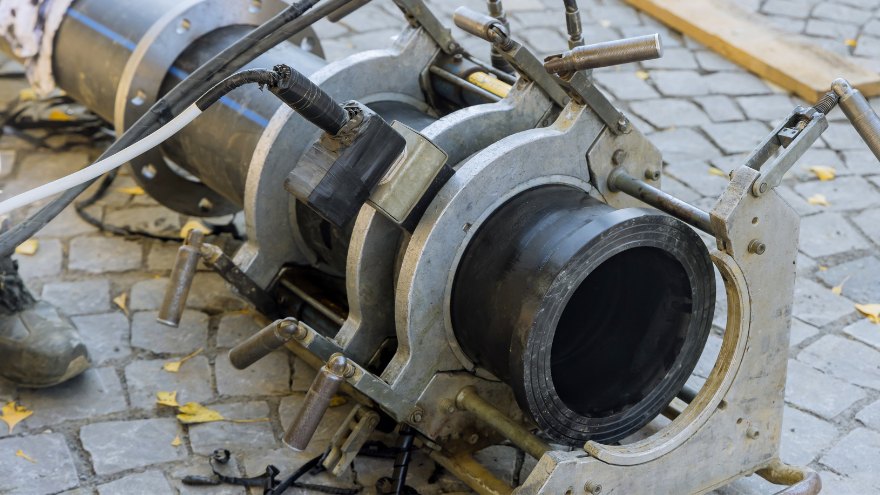If you’ve ever wondered how to build a water supply that will last for years, butt welding is something you should know. This method isn’t just a way to connect pipes – it’s a guarantee of tightness and corrosion resistance. In this article, we’ll break down the secrets of butt welding. You’ll learn why installers love it so much and how to make a weld that will survive even the worst conditions.

Check out PE pipes at the Onninen wholesaler
What exactly is pipe butt welding?
Butt welding is not difficult. In short: you need two PE water pipes or fittings, you heat the ends until they melt and press them together. Easy? It seems so, but the devil is in the details.
Pipe welder and water supply networks and connections - this is a solid investment. First, these connections are as hard as a rock. Corrosion? Forget it. Mechanical damage? Unlikely.
How to avoid them? Simple - read the manufacturers' instructions and use a high-qualityPE pipe fitting . Use good tools and take care of them. And most importantly - don't take shortcuts. Good butt welding takes time and focus, but the effect? Worth every minute
And if you need something to connect those pipes, take a look at these fittings :
- PE-brass adapter with internal thread - great thing for transitioning from PE to thread.
- PE-brass adapter with external thread - an ideal solution when you need to connect a PE pipe to a threaded fitting.
Why is it worth butt welding water networks?
Butt welding in water connections is not just a method of connecting pipes, but a real investment in the quality and durability of the installation. Why is it worth choosing this technique?
First of all, durable connections . Butt welds are exceptionally resistant to changing ground and temperature conditions. This translates into long-term reliability of the entire water supply system.
 Another advantage is tightness. Properly performed welding eliminates the risk of leaks, which is crucial for pressure tests and everyday use. Unlike other methods, it does not require additional seals, which reduces the number of potential failure points.
Another advantage is tightness. Properly performed welding eliminates the risk of leaks, which is crucial for pressure tests and everyday use. Unlike other methods, it does not require additional seals, which reduces the number of potential failure points.
It is worth emphasizing that butt welding also saves time and materials. After reaching the right temperature , the joining process is quick and efficient. This is especially important for large projects, where every minute counts.
Versatility is also important. This method works well in both small connections and extensive water supply networks , offering a uniform solution for different pipe diameters.
Although there are alternatives, such as electrofusion welding , butt welding is often the most effective. Its simplicity and reliability are invaluable, especially in difficult field conditions.
Therefore, butt welding is a technique that combines strength, efficiency and versatility - features essential in modern water supply systems.
How to properly butt weld pipes?
 Butt welding of pipes - how to do it? First, you need to prepare the equipment. The pipes must be clean as a whistle and cut straight. Then you set the temperature on the welder - and here's a warning! You must stick to the technical conditions from the manufacturer. Don't mess around.
Butt welding of pipes - how to do it? First, you need to prepare the equipment. The pipes must be clean as a whistle and cut straight. Then you set the temperature on the welder - and here's a warning! You must stick to the technical conditions from the manufacturer. Don't mess around.
The heating plate does its job - it melts the ends of the pipes. Then you quickly press them and hold them. And most importantly - let it cool down. Don't rush, because rushing is the enemy of a good weld.
And the equipment? We have something for you:
- Roweld P 63-3 socket welder for PP pipes - a solid machine for smaller jobs.
- REMS MSG 63 FM Set socket welding machine - this one can handle pipes up to 63mm.